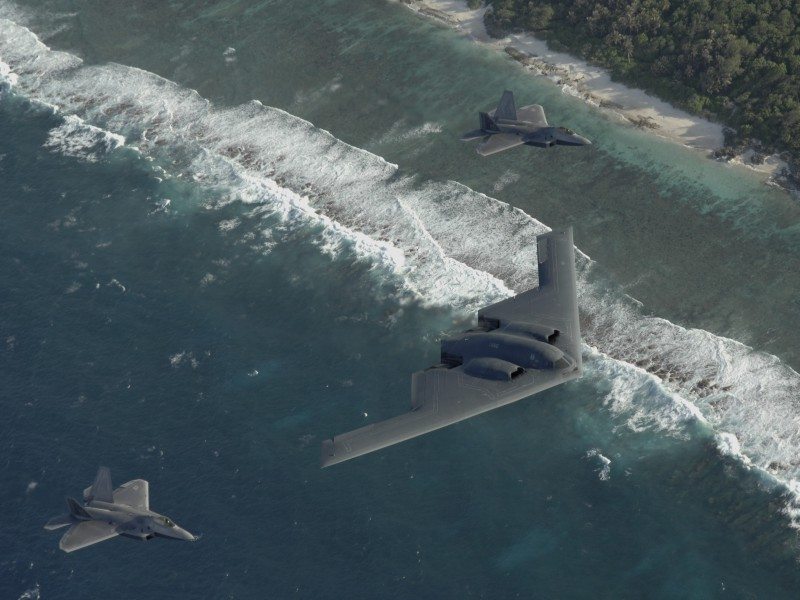Boeing and Lockheed Martin said Friday they have teamed up to bid for a new $55 billion US Air Force bomber program aimed at replacing the aging bomber fleet.
Boeing is acting as the prime contractor, and Lockheed is the main teammate in the bid to supply the Air Force’s Long-Range Strike Bomber program, the companies said in a joint statement.
“Boeing and Lockheed Martin are bringing together the best of the two enterprises, and the rest of industry, in support of the Long-Range Strike Bomber program, and we are honored to support our US Air Force customer and this important national priority,” said Dennis Muilenburg, president and chief executive of Boeing Defense, Space & Security.
Air force spokesman Ed Gulick said the program aims to build between 80 and 100 of the new, long-range stealthy bombers.
“The LRS-B program is a top modernization priority for the Air Force and critical to our national security. The Air Force looks forward to working with all participating industry partners on this very important program,” he said.
The cost of each plane is about $550 million, he said, putting the total value of the program if all 100 planes are built at $55 billion. Deliveries are due to begin in the mid 2020s, “before the current aging fleet goes out of service,” he said.
Shares in Dow member Boeing jumped 1.7 percent and Lockheed’s stock rose 1.0 percent.
The air force has two programs, the B-1 and the B-2, aimed at replacing the aging B-52s but they were wracked with heavy cost overruns. The air force only bought 20 of Northrop Grumman’s B-2s, the newest long-range bomber in its fleet.
For the development of the new bomber, the air force budgeted $292 million in fiscal year 2013 that ended September 30, and $379 million in the current fiscal 2014.
Both Boeing and Lockheed currently have projects underway for the US Air Force. Boeing, which built the B-52 fleet, is developing the KC-46 refueling tanker and Lockheed is working on the newest stealth F-35 fighter jet.
“The team will be able to produce unique and affordable solutions that could not be achieved without partnering,” they said.
Design using ‘proven technologies’
In 2011, then-defense secretary Robert Gates launched the next-generation bomber project.
According to the Pentagon, the new bomber should be designed using “proven technologies” to create a long-range, nuclear-capable and optionally remotely piloted aircraft that will be able to operate and survive in highly contested areas densely protected by air defenses.
“We’re confident that our team will meet the well-defined system requirements and deliver a world-class next-generation Long-Range Strike Bomber to the US Air Force within the budget and timeframe required,” said Orlando Carvalho, executive vice president of Lockheed Martin Aeronautics.
Despite the sharp “sequester” spending cuts for the Pentagon and a protracted budget battle in Washington, “the bomber program will go forward as planned,” said Loren Thompson, a defense consultant at the Lexington Institute.
The United States has fewer than 200 long-range bombers, with an average age of 30 years, he noted.
The B-52s date back to the 1960s, the B-1s to the 1980s under the Reagan administration and the B-2 were built in the 1990s, he said.
The B-2, built by Northrop Grumman, “is considered the most capable bomber we have” because it is “nearly invisible,” he said, but they were “extremely expensive.”
The air force’s view of its needs has changed since the B-2 was launched, designed to destroy mobile nuclear targets in Russia during the Cold War.
Today’s bomber mission is different, in that the aircraft are carrying essentially non-nuclear bombs over long distances.
Thompson said it was likely Northrop Grumman would mount a team to bid on the program.
Richard Aboulafia, an aviation consultant with the Teal Group, said that Boeing and Lockheed had to partner in the bidding.
“I would give them a good 65 percent chance together — on their own they had no chance,” Aboulafia said.










